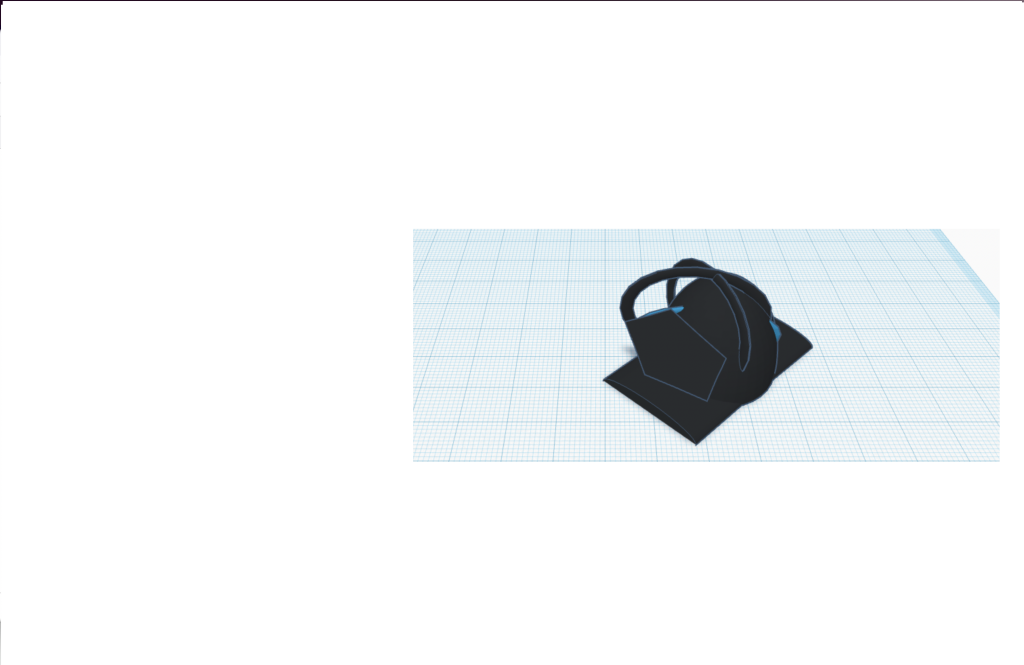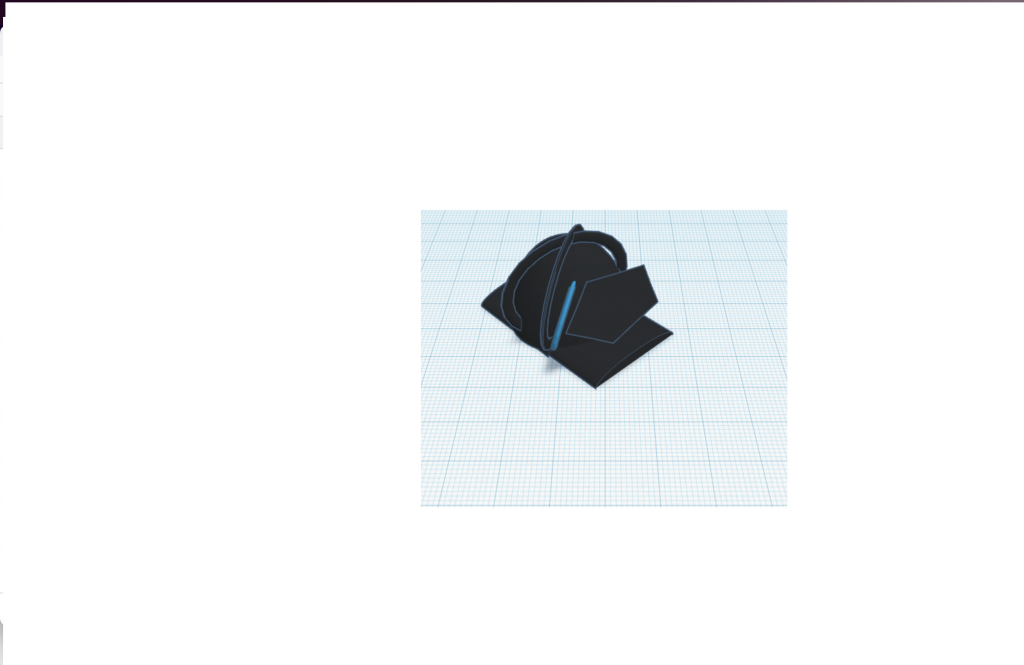For this week, I explored 3D printing! I spent an hour doing a simple little firefighter hat. It took the whole time and it’s not perfect, but it’s a start :). I followed the tutorial guide to help this project at least somewhat resemble a helmet that a firefighter could wear. It took me a while just to figure out how to manipulate the shapes and move them without shrinking them or changing how they looked. This was so hard! I don’t know why, but it was! 🙂 Yes, the shield on the helmet is crooked. At least I was able to flip it up to put in there! 🙂 Progress! After I did that, I then had trouble making the cross sections in the helmet. Maybe the extra gap in the helmet design can hold a flashlight? I’m going with that. Needless to say, there will be no mass productions of my 3D image, but it’s a good start to building my skills in 3D design. I’ve never worked with 3D printing before so I can see how challenging and yet rewarding it can be. I am amazed at what the other tutorials had to offer, and with a little more time, I’d love to explore them.


With this sandbox activity, I can definitely see how computational thinking can involve problem solving skills and breaking those problems down to figure out a design solution (“How Computational Thinking Fits Within Library Services,” 2018). With this project, I had to figure out what the different buttons meant and figure out how to manipulate the shape (to the best of my ability). Using programs like this in school can help students hone their problem-solving skills while working with technology. Using the 3D printing program really makes a student solve problems by going step-by-step through the problems to find a solution. Using computing skills is also an essential skill for further success of students in the field of technology (Moen, 2016). Being able to use and understand this type of technology can really open up doors for students in the job market. Coding is not easy and having these skills begin at an early age is an advantage for students because, starting so young, they are able to build upon what they know during their school career, which can then be used to their advantage in finding a job.
How Computational Thinking Fits Within Library Services. (2018, November 26). Libraries ready to code: An initiative of the American Library Association. https://www.ala.org/tools/readytocode/how-computational-thinking-fits-within-library-services
Moen, M. (2016, September 30). Computer coding and literacy: Librarians lead the connection. International Literacy Association. https://www.literacyworldwide.org/blog/literacy-now/2016/09/30/computer-coding-and-literacy-librarians-lead-the-connection
I think you did a great job on your firefighter hat! I, too, found it difficult to manipulate the shapes and sizes at first. I kept turning my head, hoping that would help the form move the way I wanted it to. It didn’t, haha. But, I now have a deeper appreciation for the process of 3D printing after this sandbox.
I played with tinkercad too, and did the practice tutorials – but I just couldn’t get my head wrapped around putting all of that together. Jamie had the right idea downloading someone else’s design and adapting it. But it looks like you did a pretty good job! It’s definitely something I want to learn more about!
Problem solving, technology, and perseverance are great skills to have! I like your hat. 🙂 I think 3D printing may take some time to get the hang of, but it’s a great option for our patrons, especially when we can tie it in to the curriculum or projects.
I agree that learning how to problem solve step by step is very important if you want to work in technology. Additionally, with Tinkercad, you can see how each shape is needed to create the bigger picture. That helps teach the children not to be overwhelmed with big projects…just start small and one piece at a time.
I too really see the value of teaching computational thinking. I think that many teach this concept without knowing it, but actually having it as part of the skills you want your students to learn could take that lesson to the next level.
I too had a difficult time with the 3D tools, it will take me a while to figure it all out. My friend’s son has a 3D printer and has offered to give me a tutorial, I might just take him up on it!
Great points about computational thinking! You are absolutely correct about this being something they’ll use in their careers. They won’t all be working on 3D printers, but they certainly need computation skills!
I applaud you for trying out the object tutorials! I ended up trying to make my own thing and hopefully it wouldn’t look too wonky!
Karen